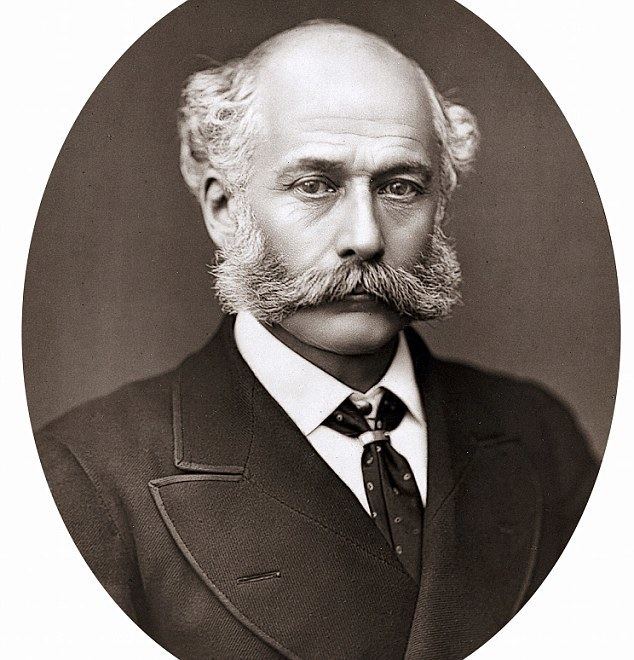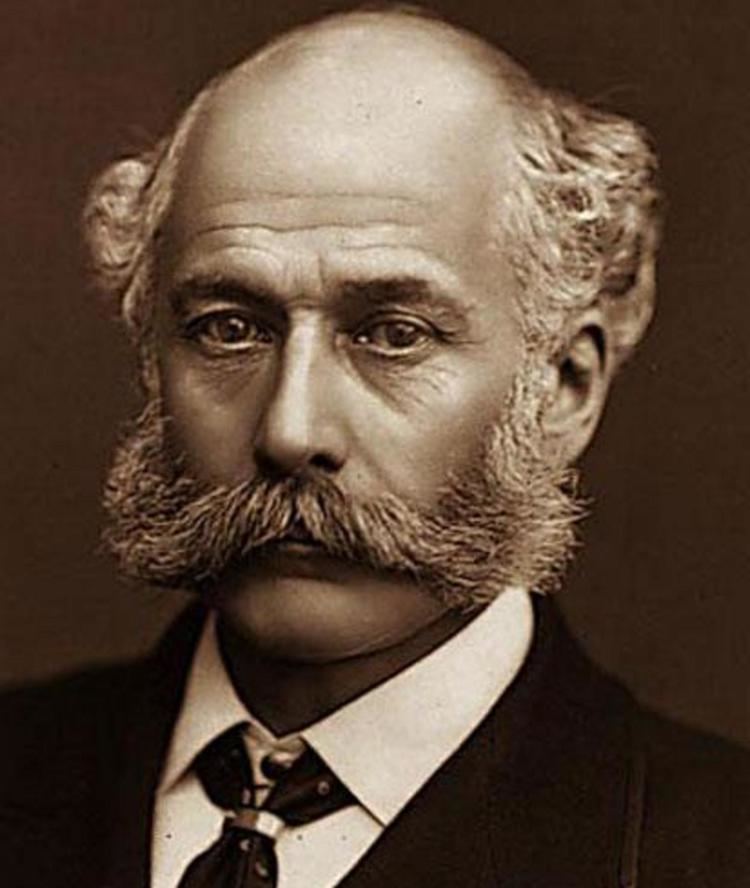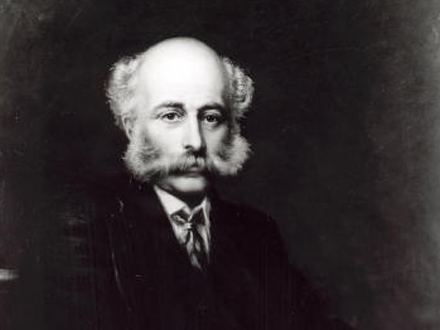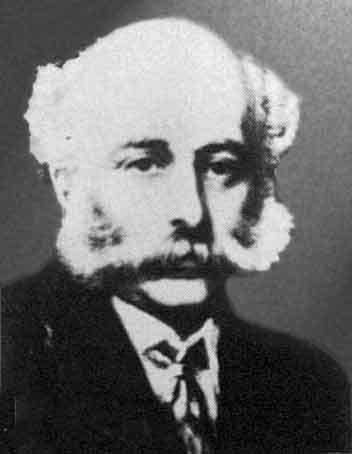Occupation Civil engineer Name Joseph Bazalgette | Role Civil engineer | |
 | ||
Full Name Joseph William Bazalgette Spouse Maria Kough (m. 1845–1891) Children Willoughby Bazalgette, Charles Norman Bazalgette Books On the Main Drainage of London: And the Interception of the Sewage from the River Thames Structures Abbey Mills Pumping Station, Crossness Pumping Station, Hammersmith Bridge, Albert Bridge - London, Putney Bridge Similar People John Snow, Edwin Chadwick, Bertie Crewe, Thomas Telford, Christopher Wren | ||
Bazalgette: Saviour of the Great Stink
Sir Joseph William Bazalgette, CB (; 28 March 1819 – 15 March 1891) was a 19th-century English civil engineer. As chief engineer of London's Metropolitan Board of Works his major achievement was the creation (in response to the Great Stink of 1858) of a sewer network for central London which was instrumental in relieving the city from cholera epidemics, while beginning the cleansing of the River Thames.
Contents
- Bazalgette Saviour of the Great Stink
- Joseph bazalgette without sanitation we are little more than beasts literary animation
- Early life
- Sewer works
- Private life
- Awards and memorials
- Notable descendants
- References

Joseph bazalgette without sanitation we are little more than beasts literary animation
Early life

Bazalgette was born at Hill Lodge, Clay Hill, Enfield, London, the son of Joseph William Bazalgette (1783–1849), a retired Royal Navy captain, and Theresa Philo, born Pilton (1796–1850), and was the grandson of a French Protestant immigrant.

He began his career working on railway projects, articled to noted engineer Sir John MacNeill and gaining sufficient experience (some in China) in land drainage and reclamation works for him to set up his own London consulting practice in 1842. By the time he married his wife, Maria Kough, in 1845, Bazalgette was deeply involved in the expansion of the railway network, working so hard that he suffered a nervous breakdown two years later.

While he was recovering, London's short-lived Metropolitan Commission of Sewers ordered that all cesspits should be closed and that house drains should connect to sewers and empty into the Thames. As a result, a cholera epidemic (1848–49) killed 14,137 Londoners.

Bazalgette was appointed assistant surveyor to the Commission in 1849, taking over as Engineer in 1852, after his predecessor died of "harassing fatigues and anxieties." Soon after, another cholera epidemic struck, in 1853, killing 10,738. Medical opinion at the time held that cholera was caused by foul air: a so-called miasma. Physician Dr John Snow had earlier advanced a different explanation, which is now known to be correct: cholera was spread by contaminated water. His view was not then generally accepted.

Championed by fellow engineer Isambard Kingdom Brunel, Bazalgette was appointed chief engineer of the Commission's successor, the Metropolitan Board of Works, in 1856 (a post which he retained until the MBW was abolished and replaced by the London County Council in 1889). In 1858, the year of the Great Stink, Parliament passed an enabling act, in spite of the colossal expense of the project, and Bazalgette's proposals to revolutionise London's sewerage system began to be implemented. The expectation was that enclosed sewers would eliminate the stink ('miasma'), and that this would then reduce the incidence of cholera.
Sewer works
At the time, the Thames was little more than an open sewer, devoid of any fish or other wildlife, and an obvious health hazard to Londoners.
Bazalgette's solution (similar to a proposal made by painter John Martin 25 years earlier) was to construct a network of 82 miles (132 km) of enclosed underground brick main sewers to intercept sewage outflows, and 1,100 miles (1,800 km) of street sewers, to intercept the raw sewage which up until then flowed freely through the streets and thoroughfares of London.
The plan included major pumping stations at Deptford (1864) and at Crossness (1865) on the Erith marshes, both on the south side of the Thames, and at Abbey Mills (in the River Lea valley, 1868) and on the Chelsea Embankment (close to Grosvenor Bridge; 1875), north of the river. The outflows were diverted downstream where they were collected in two large sewage outfall systems on the north and south sides of the Thames called the Northern and Southern Outfall sewers. The sewage from the Northern Outfall sewer and that from the Southern Outfall were originally collected in balancing tanks in Beckton and Crossness respectively before being dumped, untreated, into the Thames at high tide.
The system was opened by Edward, Prince of Wales in 1865, although the whole project was not actually completed for another ten years.
Partly as a result of the Princess Alice disaster, extensive sewage treatment facilities were built to replace the balancing tanks in Beckton and Crossness in 1900.
Bazalgette's foresight may be seen in the diameter of the sewers. When planning the network he took the densest population, gave every person the most generous allowance of sewage production and came up with a diameter of pipe needed. He then said 'Well, we're only going to do this once and there's always the unforeseen' and doubled the diameter to be used. His foresight allowed for the unforeseen increase in population density with the introduction of the tower block; with the original, smaller pipe diameter the sewer would have overflowed in the 1960s, rather than coping until the present day as it has.
The unintended consequence of the new sewer system was to eliminate cholera everywhere in the water system, whether or not it stank. The basic premise of this expensive project, that miasma spread cholera infection, was wrong. However, instead of causing the project to fail, the new sewers succeeded in virtually eliminating the disease by removing the contamination. Bazalgette's sewers also decreased the incidence of typhus and typhoid epidemics.
Bazalgette's capacity for hard work was remarkable; every connection to the sewerage system by the various Vestry Councils had to be checked and Bazalgette did this himself and the records contain thousands of linen tracings with handwritten comments in Indian ink on them "Approved JWB", "I do not like 6" used here and 9" should be used. JWB", and so on. It is perhaps not surprising that his health suffered as a result. The records are held by Thames Water in large blue binders gold-blocked reading "Metropolitan Board of Works" and then dated, usually two per year.
Private life
Bazalgette lived in 17 Hamilton Terrace, St John's Wood, north London for some years. Before 1851, he moved to Morden, then in 1873 to Arthur Road, Wimbledon, where he died in 1891, and was buried in the nearby churchyard at St Mary's Church.
In 1845 at Westminster, he married Maria Kough (1819–1902). Lady Bazalgette died at her residence in Wimbledon on 3 March 1902. They had children including:
- Joseph William, born 20 February 1846
- Charles Norman born 3 March 1847
- Edward, born 28 June 1848
- Theresa Philo, born 1850
- Caroline, born 17 July 1852
- Maria, born 1854
- Henry, born 14 September 1855
- Willoughby, born 1857
- Maria Louise, born 1859
- Anna Constance, born 3 December 1859
- Evelyn, born 1 April 1861
Awards and memorials
Bazalgette was knighted in 1875, and elected President of the Institution of Civil Engineers in 1883.
A Greater London Council blue plaque commemorates Bazalgette at 17 Hamilton Terrace in St John's Wood in North London, and he is also commemorated by a formal monument on the riverside of the Victoria Embankment in central London.
Dulwich College has a scholarship in his name either for design and technology or for mathematics and science.
